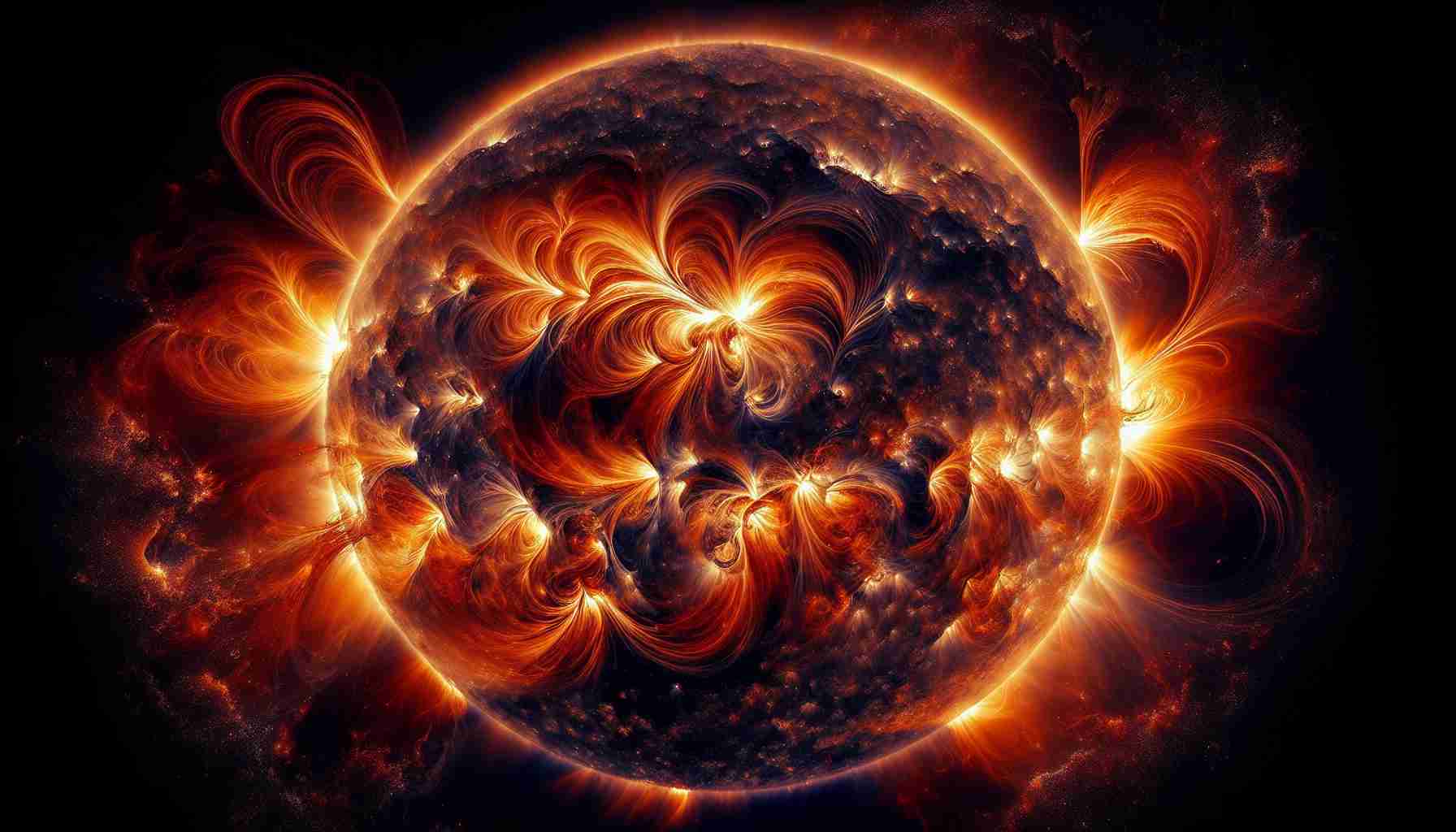
The start of October has seen an impressive display of solar activity, kicking off the month with a significant solar flare and coronal mass ejection (CME) aimed at Earth. On October 1, an X7.1 flare was recorded, marking it as one of the most powerful solar flares in recent history and the second largest of the current solar cycle.
While there’s no threat to life on Earth, predictions indicate that the ensuing solar particles from the CME could lead to minor to strong geomagnetic storms from October 3 to 5. Such phenomena are part of the Sun’s natural behavior, particularly during its active cycle, which scientists believe is at its peak. These events typically occur near sunspots, areas where magnetic fields on the Sun are particularly strong.
As these solar particles interact with Earth’s magnetic field, they might generate geomagnetic storms that primarily influence the upper atmosphere. This interaction can produce stunning auroras—the northern and southern lights—when solar particles collide with atmospheric particles, creating brilliant displays of color in the sky.
The solar flare and CME originated from the complex sunspot region known as AR 3842. With ongoing activity from this sunspot, including a recent M3.3 flare, the astronomical community is on the lookout for potential auroral displays as the geomagnetic storms unfold, with forecasts suggesting G3-level storms and a chance for dazzling light shows in the coming days.
Powerful Solar Activity Lights Up October: Understanding the Impacts and Implications
As October progresses, the impact of powerful solar activity continues to capture the attention of scientists and skywatchers alike. Events like the recent record-breaking X7.1 solar flare and subsequent coronal mass ejection (CME) have not only illuminated the skies but also raised important questions about their effects on technology, climate, and society.
What Causes Solar Flares and CMEs?
Solar flares and CMEs result from intricate interactions in the Sun’s magnetic field. These phenomena emanate from sunspot regions where magnetic energy accumulates until it is released in bursts of radiation or plasma. The release during an X-class flare, like the one observed recently, can propel high-energy particles towards Earth at speeds up to several million miles per hour.
What Are the Effects of Solar Activity on Earth?
The primary effects of increased solar activity include enhanced auroras, disruptions in radio communications, and potential impacts on satellite operations. While the stunning auroras provide a visual treat, the electromagnetic interference can lead to navigational errors and outages. Airlines operating polar routes may adjust their flights to mitigate exposure to increased radiation.
Key Challenges and Controversies
1. Infrastructure Vulnerability: There is ongoing debate regarding the readiness of modern infrastructure to withstand significant geomagnetic storms. Utilities, satellites, and communication systems are particularly at risk, necessitating advances in protective measures.
2. Climate Influence Concerns: Some researchers speculate about the long-term climate effects of solar cycles. While solar activity can influence weather patterns, the role of the Sun in climate change remains complex and controversial, with many further studies needed to clarify these interactions.
Advantages of Solar Activity
– Enhanced Aurora Displays: The beauty of auroras induced by solar activity attracts tourists to high-latitude regions, benefiting local economies.
– Scientific Research Opportunities: Each solar event provides valuable data for scientists studying space weather and its effects on Earth, offering insights that might improve predictive models.
Disadvantages of Solar Activity
– Technological Disruption: Increased solar activity can disrupt GPS, communications, and power grids, leading to potential financial losses and safety concerns for industries reliant on technology.
– Radiation Exposure Risks: Elevated levels of solar radiation can pose health risks to astronauts and individuals flying at high altitudes, necessitating careful monitoring and precautions.
Looking Ahead
As the month unfolds, the space weather community will continue to monitor AR 3842 and its subsequent solar activity. Predictions indicate the likelihood of further geomagnetic storms, giving rise to even more opportunities for breathtaking auroral displays. Observers should keep apprised of forecast updates and be prepared for changes in their local aurora visibility.
For further exploration of solar activity and its implications, visit NASA or Space.com for the latest updates and research.



